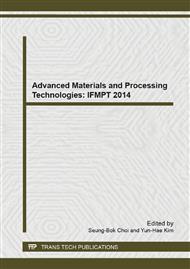p.3
p.7
p.11
p.15
p.20
p.27
p.35
p.39
Study of Molecular Structure of Water-Soluble Phenolic Resin with Different Molecular Weight by Infrared Spectrum
Abstract:
Water-soluble phenolic resin was prepared using sodium hydroxide and ammonia as catalysts. The molecular structure of water-soluble phenolic with different molecular weight was studied by infrared spectrum and the mechanism was discussed. The results show that addition reaction and polycondensation synchronize in the reaction process, while addition reaction dominates in the early stage while polycondensation dominates in the later stage.
Info:
Periodical:
Pages:
15-19
Citation:
Online since:
February 2014
Authors:
Price:
Сopyright:
© 2014 Trans Tech Publications Ltd. All Rights Reserved
Share:
Citation:


